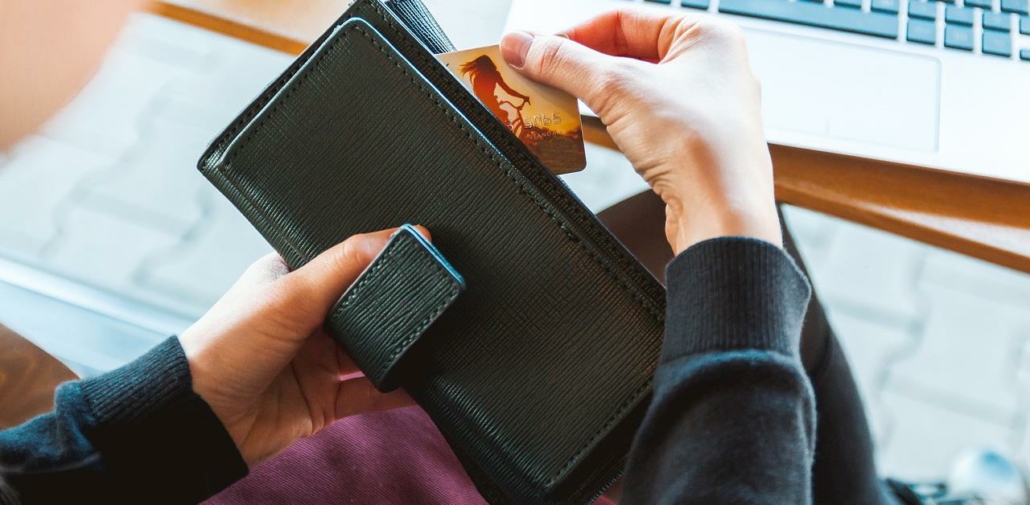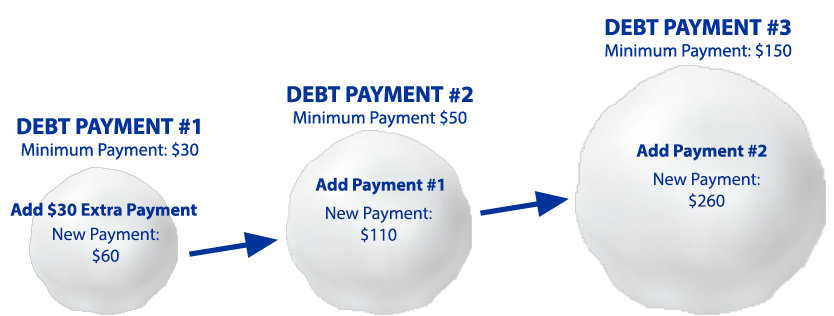
Almost everyone at some point in their life will have to learn to manage their debt load. Whether it’s credit cards, mortgages, student loans, or other loan sources, debt is likely going to be a reality for most of us at some point. This can be simple to manage in small amounts, but what can be done when it involves multiple large sources of debt? Good news, virtually almost all debt is manageable with the right approach.
1.) Make a list of what and who you owe
The first step to managing your personal debt is to identify who you owe, and how much you are in debt to them. It is especially important to identify what your monthly payments are so you can budget accordingly for them. This will help you see the bigger picture of how much you need to put aside each month just to make your minimum payments. Make sure to update this list every three to six months so you can stay on top of your debt load and to ensure that your debt reduction is moving in the right direction.
2.) Make your minimum monthly payments on time
If you can’t afford to pay off your debt, at least make an effort to pay the minimum payment. It won’t make you much progress for eliminating your debt load, but it will stop it from damaging your credit and having your loans go into default. Paying your minimum monthly payments on time is important as well, if you put it off for a month in order to pay for something else it may become more difficult for you to catch up next month. Continuously having debt in a 30 day late payment cycle can also be detrimental to your credit over the long term.
3.) Create a bill-payment calendar
Track when your bill payments are set to come out of your account by using a bill-payment calendar. By doing this it will allow you to budget your paycheques more effectively by deciding which pay period you will pay which bills. Identifying your disposable income that you have remaining for each pay period is very beneficial to managing your debt load as it will also help you to budget your other expenses such as food and entertainment. This ultimately should help reduce or stop overspending and going further into debt.
4.) Consider consolidating high interest loans
Consolidating high interest loans can be a good fit for you if you are someone that holds several high interest loans, typically some credit cards and department store credit cards fall into this category. Last year department store cards had an average interest rate of 24.99% with some of these cards reaching as high as 30.49% according to an annual survey done by creditcards.com. By consolidating these cards into a personal loan, it will help drastically reduce the amount of money that is racked up by interest alone. It will also make payment schedules considerably easier by being able to pay the debt all in one place with one single payment vs paying several creditors with multiple payments on different schedules.
5.) Pay off high interest debt first
If consolidating isn’t an option, the same results can be achieved also by paying off your highest interest rate debt first. Again, these will likely be department store credit cards or other high interest cards. By paying these off first you will save more in the long run on interest payments freeing up more excess income to help pay down other debts as needed afterwards. Paying these off will also help improve your credit score by eventually closing down multiple open credit sources which will make obtaining a low interest loan in the future much easier.
6.) Consider working an additional part-time job
If cutting down on expenses isn’t freeing up enough extra income to help pay down portions of debt, consider taking on an additional part-time job. Even marginal amounts of added income can be huge when it comes to paying off debt. By working an additional 4-8 hours a week you may be able to easily net $100 to $200 extra a month which will make a large difference in paying off lump sums of debt. Freelance work is another option that’s available depending on your field of work and can vary from cleaning houses, dog walking, professional services, and much more the opportunities here are almost endless and you’ll be able to set your own schedule for what works for you.
7.) If all else fails, seek professional help
If all of the above fails, or it’s difficult to keep up with payments that are over and above your income every month you may need to reach out for help. There are many types of professionals that specialize in this field and people everywhere end up facing this same problem. If you’re facing this type of problem, we may be able to help by reviewing potential options with you, contact us and book an appointment with one of our Account Managers to see what’s available to you.



 budget with expensive gifts and extra activities. In fact a recent financial poll has discovered that one third of Canadians rack up an additional $1,200 in credit card debt over the holidays. If you’ve recently gone over budget on credit card debt and Holiday Cheer don’t despair, we have a way out. Here are a few tips for you to use to get your debt back under control:
budget with expensive gifts and extra activities. In fact a recent financial poll has discovered that one third of Canadians rack up an additional $1,200 in credit card debt over the holidays. If you’ve recently gone over budget on credit card debt and Holiday Cheer don’t despair, we have a way out. Here are a few tips for you to use to get your debt back under control:
